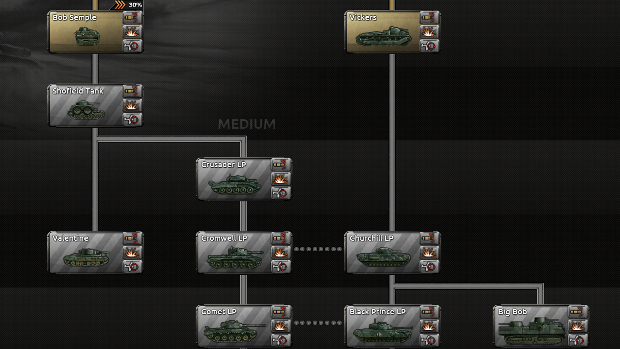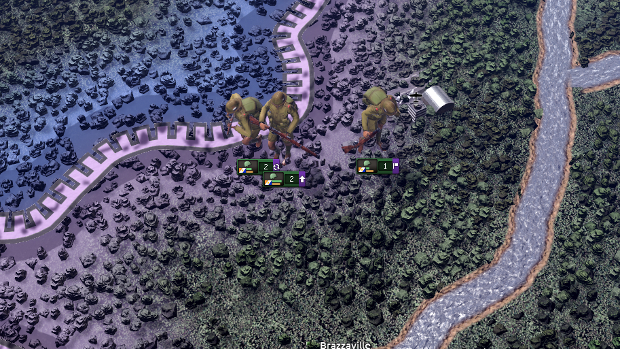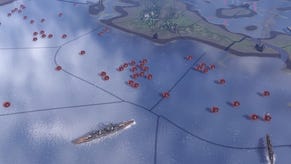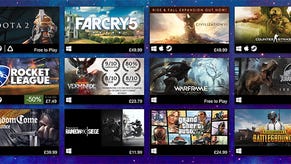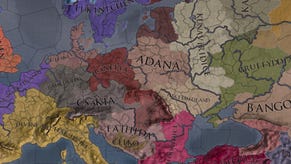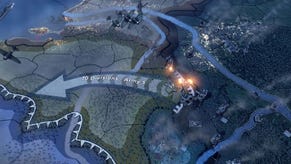Wot I Think: Hearts Of Iron IV - Together For Victory
Common ground
Playing any nation in Hearts of Iron IV [official site] beyond the big players, like Great Britain or Germany, is a lot like sitting at the kid’s table. The pace is slow, there are less complex decisions to make, and it never feels like anything that’s going on is nearly as important as what’s happening at the adult’s lavish banquet table. They’re dragging the world into a global war while you’re wondering if you’ve been completely forgotten.
Together for Victory promises to change that, at least for the Commonwealth countries: Canada, Australia, South Africa, India and New Zealand. The expansion gives these five nations a serious makeover, and they now sport unique national focus trees, historical and speculative events, and more freedom even while they remain stuck to Britain.
I found myself taking a trip down to South Africa, perhaps tempted by the knowledge that, right now, it’s summer down there. It’s also a country I haven’t played before, largely because there never seemed like much point.
South Africa, in the base game, doesn’t exactly do much to capture one’s attention. There’s little beyond its geographical location to set it apart from any other nation, with no national spirit and only the generic national focus tree. The generic tree isn’t terrible, it’s just very broad and lacks the historical flavour of its nation-specific counterparts. Since it’s the same tree for all but the war’s key players, it fails to give countries distinct strengths or unique paths. Ultimately, managing South Africa is pretty boring, something running a nation during World War 2 should absolutely not be. That South Africa no longer exists in Together for Victory.
Suddenly there are all these distinct options, specifically tailored to the country, that let you explore a vast range of routes, including remaining loyal to Britain and fending off the Axis in Africa, or gaining independence and carving out your own African faction. And it’s now significantly easier to change South Africa’s direction and transform its staunchly democratic population into communist or fascist supporters. New national focus options – crammed into an absolutely huge tree – speed things along dramatically, increasing the rate at which the country evolves.
I decided to free myself from the shackles of Britain. South Africa has an early focus, Abandon Westminster, which increases the rate of autonomy, preparing the country for independence. It also unlocks paths into supporting Germany or the Soviet Union, saving you from spending all of your political power befriending them. Going down these roads does more than help South Africa make new friends, however, as options to outlaw strikes and other actions that reflect the fascist or communist ideologies open up.
Autonomy is described by Paradox as a tug of war. There are four levels, starting with puppet, where the country has very little freedom, all the way up to being an independent nation. To reach a new tier, you’ve got to generate enough autonomy, but Britain can also do things to lower that number. It can also take actions that increase it. Britain might, for instance, see the benefits of Commonwealth nations having stronger armies and infrastructure, even though this could encourage the country to make a bid for freedom. Unfortunately, while playing as South Africa, which is a dominion and thus only one tier away from independence, that tug of war simply never happened. Britain pretty much just ignored me. Rude blighters.
India under the British Raj starts in a more interesting but precarious position. It’s a colony, so it’s at the beck and call of Britain and can’t make any big moves, like declaring war or making guarantees. One of its starting national spirits, Princely States, also means that autonomy is constantly decreasing. Reaching the next tier and becoming a dominion, which is a little closer to a partnership, requires you to work your way down the national focus tree, unlocking the political-themed options. Eventually, India can even seek assistance from the Germans or Soviets, which increases autonomy as well as generating more support for fascism or communism. It’s a bit like making a deal with the devil; you’re not necessarily buying into these ideologies, but rather you’re willing to do anything to free India from tyranny. It’s a lot more involved than splitting from Britain is as another country, but even more imperative if you’re to have any influence on the rest of the world.
With the arrival of 1938, South Africa had become independent. Lamentably, the climax of this event was a little underwhelming. There was no fanfare, no posturing from Britain, it just happened and immediately became the new normal. From that point, I essentially rebuilt South Africa in Germany’s image, eventually cozying up to the Reich and finally joining the Axis. Research agreements and military aid gave the country a boost, making me bold enough to declare war on Portugal, with an eye toward pinching some of those vulnerable nearby regions.
You can throw your weight around a bit more in Together for Victory. With more ways for the Commonwealth nations to develop their armies and infrastructure, they can get to fighting strength a lot sooner and are more effective when they start pushing their borders. They aren’t bystanders anymore, and can play significant roles in the war, or they create their own separate goals, like slicing off a chunk of the world while nobody is watching or creating a brand new faction.
Spreading fascism throughout Africa left a bad taste in my mouth, so I changed speeds and took control of Canada. This time, I’d spread democracy and cheer and poutine all across the globe. While independence is seductive, there are actually plenty of reasons to remain loyal to Britain, and the decision to remain a dominion comes with unique benefits. Certain focuses can only be selected if the country is part of the Commonwealth, including ones where Britain gives its dominion more land to manage on its behalf. Perhaps the most important benefit, however, is technology sharing.
Every country in the Commonwealth gets a boost to research thanks to its closeness to Britain and the other nations. Every time a country researches something, this reduces the length of time it takes for the others to unlock it. It’s massively helpful when you’re getting started, and it makes a pretty compelling argument for staying buds with Britain. However! Tech sharing isn’t just a Commonwealth feature – every nation can take advantage of it by joining a faction with tech sharing, or by selecting the tech sharing continuous focus.
What are continuous focuses? Only one of the best additions to Hearts of Iron IV. Despite the often huge scale of the game’s national focus trees, you’ll inevitably run out of things to unlock. Maybe you don’t meet some prerequisites, or perhaps you’ve simply unlocked everything that you need. When that happens, it can start to feel like you’re no longer improving your country, and what was once an important aspect of the game gets pushed off into the margins. Continuous focuses rather effectively nip this problem in the bud. These focuses confer a persistent bonus while they’re selected, improving military production, infrastructure, army training, construction, and if you fancy it you can even start subjugating people for kicks.
A lot of the new features and improvements are related to the grand strategy layer, which is prominent between 1936-39, but the wargame layer hasn’t been ignored. There are some new toys to play with, and there’s fun to be had in creating an alternate history where little New Zealand successfully starts making its own tanks. There’s the adorable Bob Semple tank, for instance, which never made it into mass production because of how terrible it was. In Together for Victory, you can give them the chance they never had.
When you give your troops their marching orders, you’ll notice a new option: spearhead. Its role is somewhere between the regular offensive lines, which are flexible and allow troops to react to changes rather than just marching forward regardless, and manual control. When you use this option, troops will aggressively attempt to take every province in the order they were painted in, trying to smash through regardless of what’s happening. It can be reckless, but can be very handy when it comes to poking holes in the enemy line or cutting them off. Ultimately it reduces some of the micromanagement demands that come with controlling individual or small groups of units without sacrificing precision.
Scraps in Hearts of Iron IV can get messy. Terrain, weather, attrition, supply, all the different divisions and equipment that might be involved in any given confrontation – there’s a lot to keep track off and no single place where you can see absolutely everything you need to know clearly. Well, that was until the introduction of the combat log. It’s brilliant, and I never knew how much I needed until I started poring over it.
Bring up the log and you can see absolutely everything you need to know about every single engagement you’ve been involved in, or at least all of them in the last year. How much equipment have you lost, and how did you lose it? What was the manpower situation in that fight you just got annihilated in. What type of terrain are you fighting in the most? This wealth of accessible knowledge is invaluable. The abundance of statistics can be intimidating, especially if you’re looking at an entire year of fighting, but from it you can see exactly where your strengths and weaknesses are, and thus formulate new plans. Conveniently, you can also click on them and immediately be taken to the action.
I’m not convinced that playing a nation like South Africa or Canada will ever be quite as engaging as playing Britain or Germany, at least not when it comes to the war itself. They still have to play catch up, and they’re always going to depend on the superpowers. Together for Victory doesn’t simply buff the Commonwealth nations to make them more viable however – it gives them more options and more nation-defining decisions, especially in regards to creating an alternate history. It’s an entirely different focus, and a welcome one. There’s more room now to carve your own path, as Hearts of Iron IV takes another step toward being more than just a World War 2 game, instead becoming a 20th Century sandbox.






